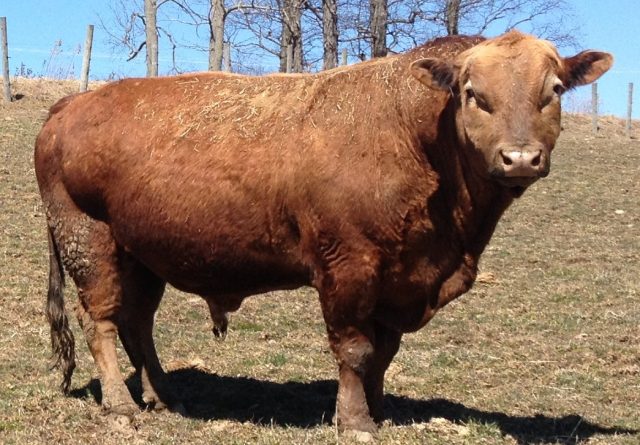Type the name of the breed you're looking for below
[wpdreams_ajaxsearchlite] Don't see the breed your're looking for? Click here and let us know!
Beefalo cattle
| Place of Origin | United States of America |
| Origin | Accidental crosses were noticed as long ago as 1749 in the southern English colonies of North America. Beef and bison were first intentionally crossbred during the mid-19th century. The first deliberate attempts to cross breed bison with cattle was that of Col Samuel Bedson, warden of Stoney Mountain Penitentiary, Winnipeg, in 1880. Bedson bought eight bison from a captive herd of James McKay and inter-bred them with Durham cattle. The hybrids raised by Bedson were described by naturalist Ernest Thompson Seton as follows: The hybrid animal is claimed to be a great improvement on both of its progenitors, as it is more docile and a better milker than the Buffalo, but retains its hardihood, while the robe is finer, darker and more even, and the general shape of the animal is improved by the reduction of the hump and increased proportion of the hind-quarters. After seeing thousands of cattle die in a Kansas blizzard in 1886, Charles "Buffalo" Jones, a co-founder of Garden City, Kansas, also worked to cross bison and cattle at a ranch near the future Grand Canyon National Park, with the hope the animals could survive the harsh winters. He called the result "cattalo" in 1888. Mossom Boyd of Bobcaygeon, Ontario first started the practice in Canada. After his death in 1914, the Canadian government continued experiments in crossbreeding up to 1964, with little success. For example, in 1936 the Canadian government had successfully cross-bred 30 cattalos. Lawrence Boyd continues the crossbreeding work of his grandfather on a farm in Alberta. It was found early on that crossing a male bison with a domestic cow would produce few offspring, but that crossing a domestic bull with a bison cow apparently solved the problem. The female offspring proved fertile, but rarely so for the males. Although the cattalo performed well, the mating problems meant the breeder had to maintain a herd of wild and difficult-to-handle bison cows. In 1965, Jim Burnett of Montana produced a hybrid bull that was fertile. Soon after, Cory Skowronek of California formed the World Beefalo Association and began marketing the hybrids as a new breed. The new name, Beefalo, was meant to separate this hybrid from the problems associated with the old cattalo hybrids. The breed was eventually set at being genetically at least five-eighths Bos taurus and at most three-eighths Bison. A United States Department of Agriculture study showed Beefalo meat, like bison meat, to be lower in fat and cholesterol. The association claims Beefalo are better able to tolerate cold and need less assistance calving than cattle, while having domestic cattle's docile nature and fast growth rate; they are also thought to produce less damage to rangeland than cattle. In 1983, the three main Beefalo registration groups reorganized under the American Beefalo World Registry. Until November 2008, there were two Beefalo associations, the American Beefalo World Registry and American Beefalo International. These organizations jointly formed the American Beefalo Association, Inc., which currently operates as the registering body for Beefalo in the United States. |
| Purpose | The breed was created for beef production. |
| Appearance | Varies greatly depending on cattle that were used in the cross program. They are a medium to large breed of cattle. |
| Horns | Horned or polled (hornless) |
| Other Considerations | Effect on wild American bison conservation: Creating the Beefalo has proven to be a serious setback to wild American bison conservation. Most current bison herds are genetically polluted or partly crossbred with cattle. There are only four genetically unmixed American bison herds left, and only one that is also free of brucellosis, the Wind Cave bison herd that roams Wind Cave National Park, South Dakota. Dr. Dirk Van Vuren, formerly of the University of Kansas, however, points out that "The bison today that carry cattle DNA look exactly like bison, function exactly like bison and in fact are bison. For conservation groups, the interest is that they are not totally pure." |



